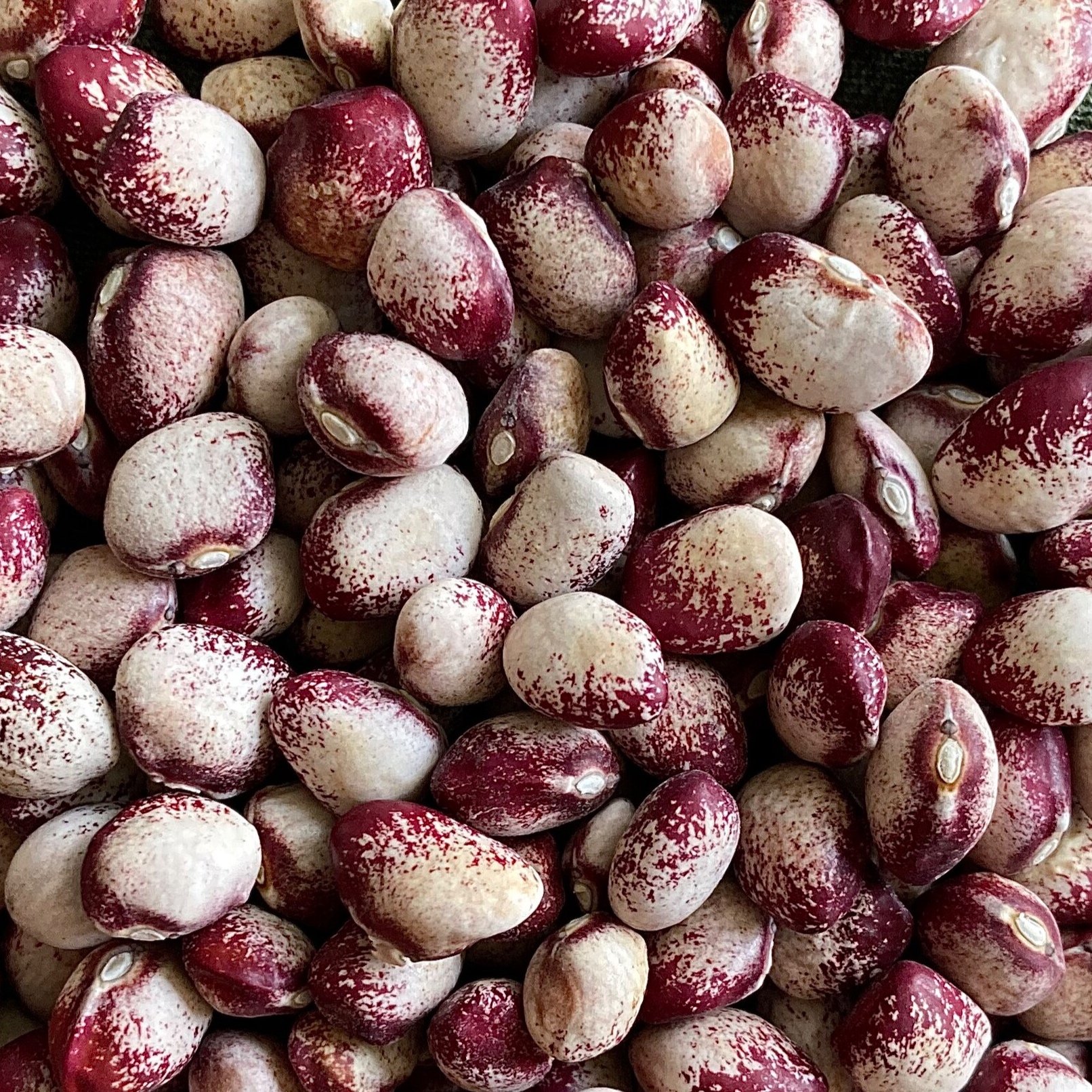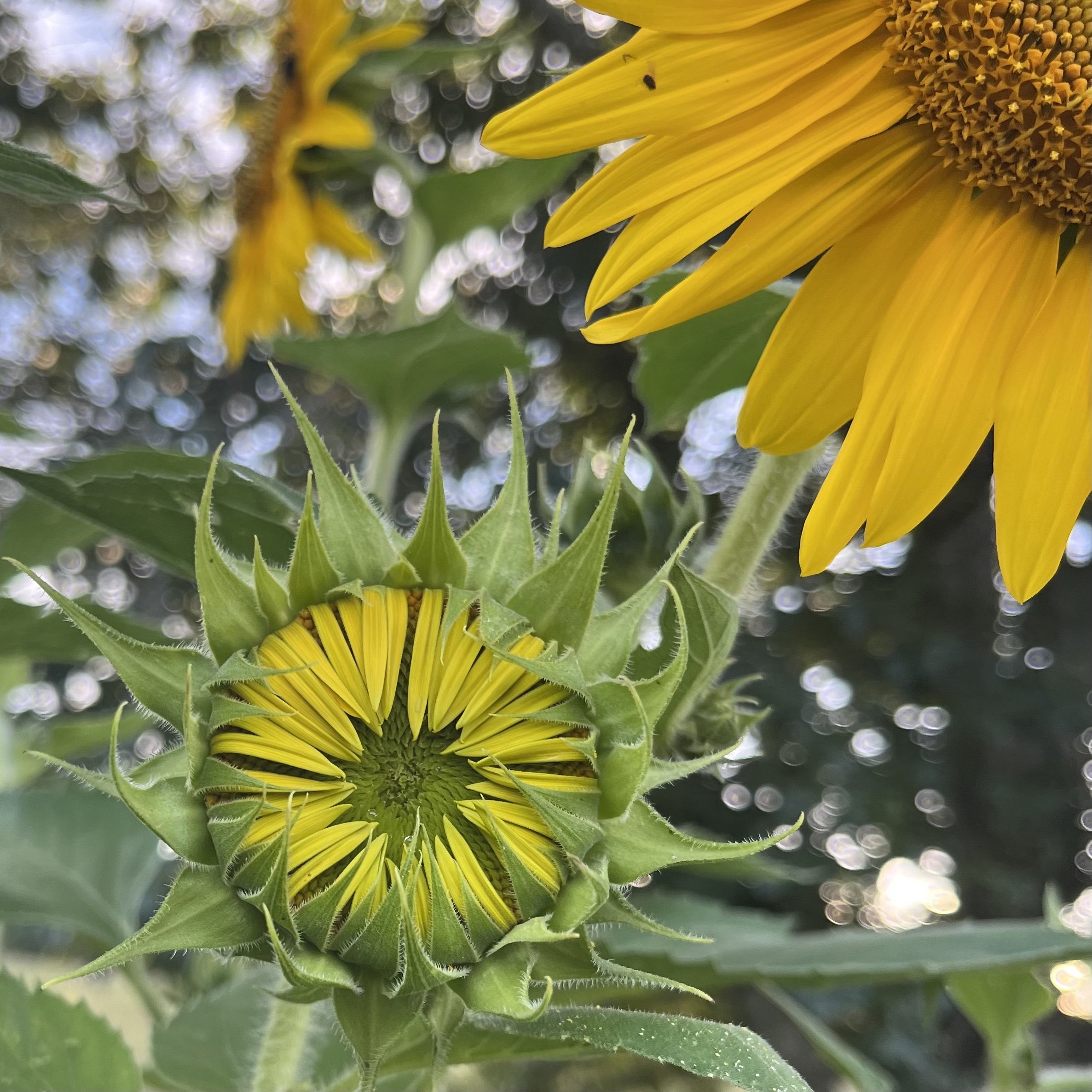 Image 1 of
Image 1 of

Bean, Seneca Cornstalk
Product Description: (Phaseolus vulgaris) Also known as Amish Knuttle or Mayflower, this heirloom bean is rumored to have arrived in the New World alongside the very first Pilgrims on the notorious 1620 voyage of the Mayflower. Some accounts even claim that Anne Hutchinson herself brought the seeds from England to help sustain the young Plymouth colony.
A fun story, perhaps, but historical records suggest that its true origin lays with the Seneca Nation — hundreds (if not thousands) of years before the Mayflower ever set sail. The Seneca people believed the Cornstalk bean to be the most ancient of all the varieties they grew and it has played a starring role in much of their tribal folklore ever since.
In more recent history, this cultivar was prized in the Carolinas for its outstanding flavor and beauty. The fresh pods (while stringy) are a remarkably flavorful garden snack. Although when left to fully mature on the vine, the cool fall breeze dries these beans to perfection. Each cream-colored seed within develops an airbrushed splattering of rich maroon speckles, making Seneca Cornstalk among the most beautiful dry beans that we offer. Cut-short type. Pole habit. 50 seeds per packet.
Growing Information: Direct seed in full sun after all danger of frost has passed. Sow your beans 2.5 cm (1 inch) deep and 15 cm (6 inches) apart at the base of a trellis. Guide the vines up the trellis as they grow taller. For fresh string beans, harvest frequently to optimize yield. For dry beans, allow the entire plant to die back and dry until the pods are brown and brittle.
Make sure that your plants are receiving adequate airflow during this time to prevent excessive moisture and fungal growth. A small amount of spotting on the outside of drying pods is completely normal and will not affect the quality of the beans within. Once dry, harvest the pods and crack them open. Sort out any beans that are damaged or showing signs of rot then store your harvest in a cool, dry place until use. 100 days to maturity.
How To Save Bean Seeds
Allow the plant to dry out completely. Mature pods will be brown and brittle. Make sure that your plants are receiving adequate airflow to prevent excessive moisture and mold growth throughout the drying process. However, a small amount of mildew spotting on the outside of drying pods is completely normal and has no reason for concern. Once dry, harvest the seed pods and crack them open. Sort out any damaged, misshapen, or rotting beans. Continue the drying process if necessary then store them in a cool, dry place.
Product Description: (Phaseolus vulgaris) Also known as Amish Knuttle or Mayflower, this heirloom bean is rumored to have arrived in the New World alongside the very first Pilgrims on the notorious 1620 voyage of the Mayflower. Some accounts even claim that Anne Hutchinson herself brought the seeds from England to help sustain the young Plymouth colony.
A fun story, perhaps, but historical records suggest that its true origin lays with the Seneca Nation — hundreds (if not thousands) of years before the Mayflower ever set sail. The Seneca people believed the Cornstalk bean to be the most ancient of all the varieties they grew and it has played a starring role in much of their tribal folklore ever since.
In more recent history, this cultivar was prized in the Carolinas for its outstanding flavor and beauty. The fresh pods (while stringy) are a remarkably flavorful garden snack. Although when left to fully mature on the vine, the cool fall breeze dries these beans to perfection. Each cream-colored seed within develops an airbrushed splattering of rich maroon speckles, making Seneca Cornstalk among the most beautiful dry beans that we offer. Cut-short type. Pole habit. 50 seeds per packet.
Growing Information: Direct seed in full sun after all danger of frost has passed. Sow your beans 2.5 cm (1 inch) deep and 15 cm (6 inches) apart at the base of a trellis. Guide the vines up the trellis as they grow taller. For fresh string beans, harvest frequently to optimize yield. For dry beans, allow the entire plant to die back and dry until the pods are brown and brittle.
Make sure that your plants are receiving adequate airflow during this time to prevent excessive moisture and fungal growth. A small amount of spotting on the outside of drying pods is completely normal and will not affect the quality of the beans within. Once dry, harvest the pods and crack them open. Sort out any beans that are damaged or showing signs of rot then store your harvest in a cool, dry place until use. 100 days to maturity.
How To Save Bean Seeds
Allow the plant to dry out completely. Mature pods will be brown and brittle. Make sure that your plants are receiving adequate airflow to prevent excessive moisture and mold growth throughout the drying process. However, a small amount of mildew spotting on the outside of drying pods is completely normal and has no reason for concern. Once dry, harvest the seed pods and crack them open. Sort out any damaged, misshapen, or rotting beans. Continue the drying process if necessary then store them in a cool, dry place.
Product Description: (Phaseolus vulgaris) Also known as Amish Knuttle or Mayflower, this heirloom bean is rumored to have arrived in the New World alongside the very first Pilgrims on the notorious 1620 voyage of the Mayflower. Some accounts even claim that Anne Hutchinson herself brought the seeds from England to help sustain the young Plymouth colony.
A fun story, perhaps, but historical records suggest that its true origin lays with the Seneca Nation — hundreds (if not thousands) of years before the Mayflower ever set sail. The Seneca people believed the Cornstalk bean to be the most ancient of all the varieties they grew and it has played a starring role in much of their tribal folklore ever since.
In more recent history, this cultivar was prized in the Carolinas for its outstanding flavor and beauty. The fresh pods (while stringy) are a remarkably flavorful garden snack. Although when left to fully mature on the vine, the cool fall breeze dries these beans to perfection. Each cream-colored seed within develops an airbrushed splattering of rich maroon speckles, making Seneca Cornstalk among the most beautiful dry beans that we offer. Cut-short type. Pole habit. 50 seeds per packet.
Growing Information: Direct seed in full sun after all danger of frost has passed. Sow your beans 2.5 cm (1 inch) deep and 15 cm (6 inches) apart at the base of a trellis. Guide the vines up the trellis as they grow taller. For fresh string beans, harvest frequently to optimize yield. For dry beans, allow the entire plant to die back and dry until the pods are brown and brittle.
Make sure that your plants are receiving adequate airflow during this time to prevent excessive moisture and fungal growth. A small amount of spotting on the outside of drying pods is completely normal and will not affect the quality of the beans within. Once dry, harvest the pods and crack them open. Sort out any beans that are damaged or showing signs of rot then store your harvest in a cool, dry place until use. 100 days to maturity.
How To Save Bean Seeds
Allow the plant to dry out completely. Mature pods will be brown and brittle. Make sure that your plants are receiving adequate airflow to prevent excessive moisture and mold growth throughout the drying process. However, a small amount of mildew spotting on the outside of drying pods is completely normal and has no reason for concern. Once dry, harvest the seed pods and crack them open. Sort out any damaged, misshapen, or rotting beans. Continue the drying process if necessary then store them in a cool, dry place.





